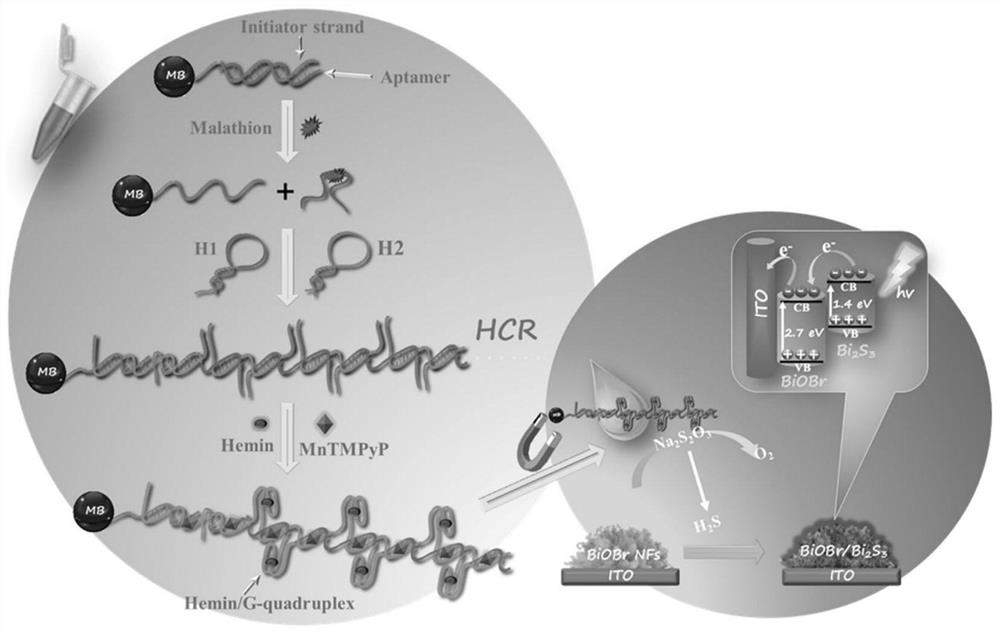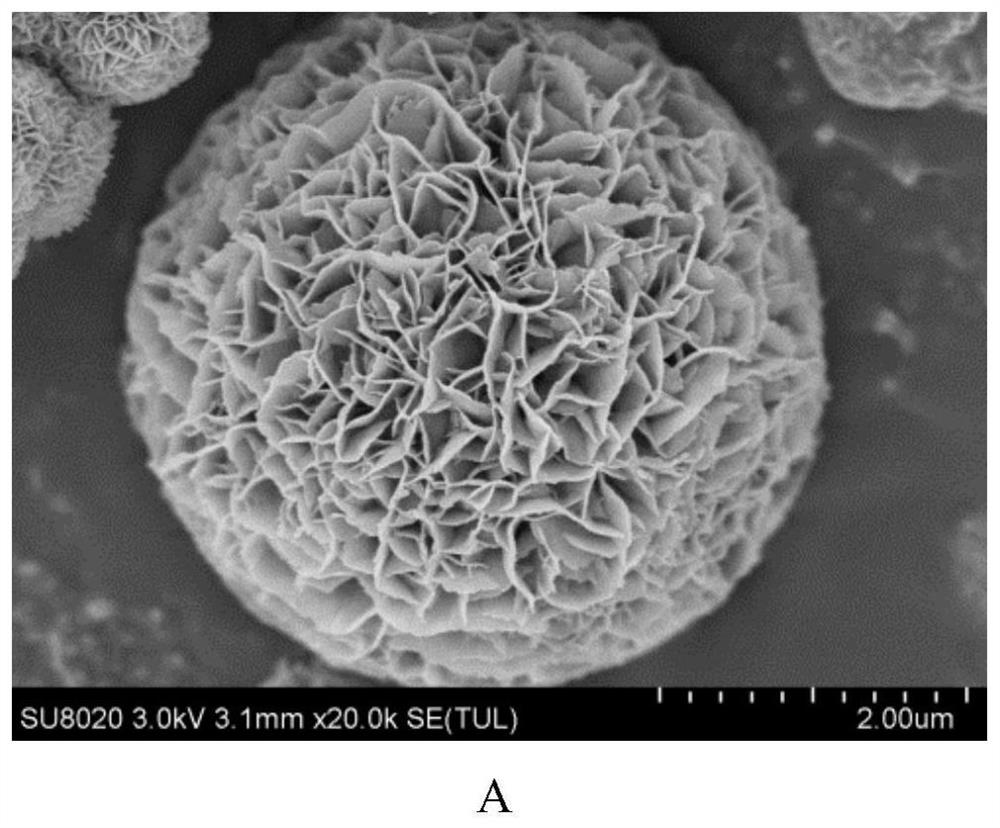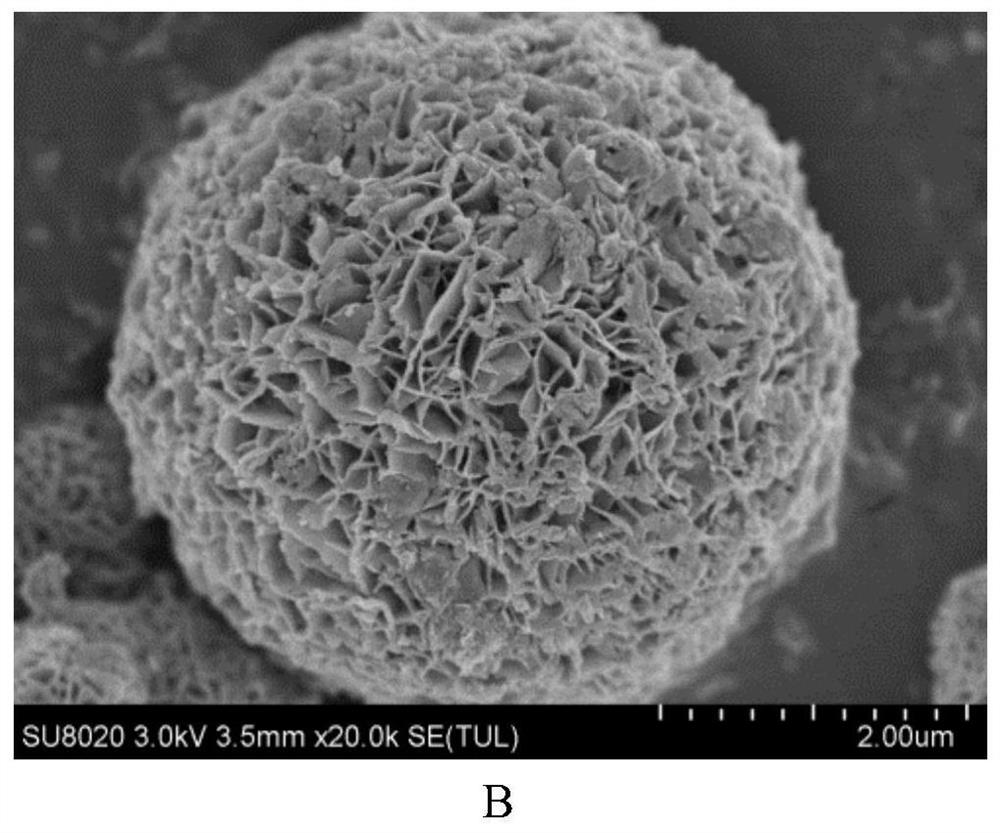Method for photoelectrochemically detecting organophosphorus pesticide based on bismuth oxybromide/bismuth sulfide semiconductor heterojunction generated by biological induction
An organophosphorus pesticide and photoelectrochemical technology, which is applied in the direction of measuring devices, scientific instruments, and material analysis by electromagnetic means, can solve the problems of low-cost OPs detection, expensive, cumbersome, etc., and achieve photoelectric signal enhancement and promote separation. , Improve the effect of photocurrent intensity
- Summary
- Abstract
- Description
- Claims
- Application Information
AI Technical Summary
Problems solved by technology
Method used
Image
Examples
Embodiment 1
[0039] (1) 0.3g of Bi(NO 3 ) 3 ·5H 2 O was dissolved in 10 mL of ethylene glycol monomethyl ether, and then slowly added 0.6 g of 1-dodecyl-3-methylimidazolium bromide ([C 12 Mim]Br), stirred evenly and ultrasonically treated for 20min; the mixture was transferred to a stainless steel autoclave lined with Teflon, and heated to 160°C for 24h; after cooling, a milky white product could be observed at the bottom of the autoclave, alternately After washing with deionized water and ethanol three times, the BiOBr powder was obtained after drying overnight at 80 °C.
[0040] (2) Ultrasonic disperse 4 mg of BiOBr powder prepared in step (1) in 1 mL of ultrapure water, and drop 10 μL on the surface of the ITO electrode. After drying at room temperature, a BiOBr / ITO electrode was obtained.
[0041] (3) Add 10 μL of biotin-modified helper DNA (S 1, 1.0μM) and 10μL avidin-modified magnetic beads (Strep-MB, 5mg mL -1 ), after incubating at 37°C for 20min, add 10μL of malathion aptame...
PUM
 Login to View More
Login to View More Abstract
Description
Claims
Application Information
 Login to View More
Login to View More - R&D
- Intellectual Property
- Life Sciences
- Materials
- Tech Scout
- Unparalleled Data Quality
- Higher Quality Content
- 60% Fewer Hallucinations
Browse by: Latest US Patents, China's latest patents, Technical Efficacy Thesaurus, Application Domain, Technology Topic, Popular Technical Reports.
© 2025 PatSnap. All rights reserved.Legal|Privacy policy|Modern Slavery Act Transparency Statement|Sitemap|About US| Contact US: help@patsnap.com



